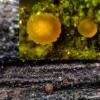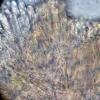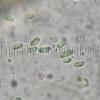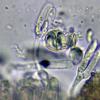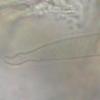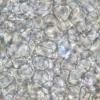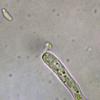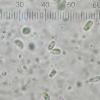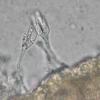
17-06-2008 23:11
NC NCSur branche de fraxinus excelsior à terre, décor

05-11-2011 10:55
Ismael WindOn Larix i found 2 specimens of ascocoryne. The fi

08-11-2011 16:08
 Yatsiuk Iryna
Yatsiuk Iryna
Hello, forum! There is Bisporella collected on Po

10-08-2011 20:09
 Yannick Mourgues
Yannick Mourgues
Bonjour.J'aimerai vos avis sur cette espèce.Ascom

06-11-2011 15:18
 Martin Bemmann
Martin Bemmann
Hello,is someone able to provide this paper?Gams&a

05-11-2011 17:38
 Bernard Declercq
Bernard Declercq
Hi,I recently collected a discomycete on Hieracium

05-11-2011 12:10
Iznova TatjanaBonjour, cher colleagues :) Votre aide est tres n
Orbilia de Quercus
Javier Ormad,
10-11-2011 00:12
Os presento una Orbilia.Ascomas de hasta 1 mm. En corteza externa de restos muertos, de Quercus ballota. Ascas 34-42 x 4-5 micras. Esporas 4-6(7) x 2-3 micras, con 2 vacuolas en los extremos. Parafisis septadas hasta 4.5 micras.
Orbilia coccinella ?
Hi all. I present a Orbilia.
Ascomata of up to 1 mm. In the outer crust of dead remnants of Quercus ballota. Asci 34-42 x 4-5 microns. Spores 4-6 (7) x 2-3 microns, with 2 vacuoles at the ends. Septate paraphyses up to 4.5 microns.
Orbilia coccinella. Orbilia digitalina??
Jean-Paul Priou,
10-11-2011 09:13

Re : Orbilia de Quercus
Javier, your Spores seem strange, too green, may be algae ? also ascus too wide for eucalypti= coccinella
JPP
JPP
Hans-Otto Baral,
10-11-2011 18:14

Re : Orbilia de Quercus
Hi Javier & Jean-Paul
Jean-Paul is right, and you have indeed the correct spores inside the asci. I see a spore body at one end. Could you please send me this image nr. 2 in high resolution? Perhaps also with a scale?
The Dicranidion is interesting, but we do not know a species with such crenulate margin in combination with Dicranidion.
Could you please look at the margin whether there are glassy processes or what these teeth are?
Zotto
Jean-Paul is right, and you have indeed the correct spores inside the asci. I see a spore body at one end. Could you please send me this image nr. 2 in high resolution? Perhaps also with a scale?
The Dicranidion is interesting, but we do not know a species with such crenulate margin in combination with Dicranidion.
Could you please look at the margin whether there are glassy processes or what these teeth are?
Zotto
Javier Ormad,
10-11-2011 22:17
Hans-Otto Baral,
10-11-2011 22:26

Re : Orbilia de Quercus
That's fine. I am still unsure, and yes, please send me the ascus photo Nr. 2 and also the macro in min. double resolution.
My idea is a but that it could be Orbilia microsoma. Important is also that the asci are 8-spored, because there is an O. pleiomicrosoma with 16 spores.
These microsomas have short glassy processes at the margin.
Zotto
My idea is a but that it could be Orbilia microsoma. Important is also that the asci are 8-spored, because there is an O. pleiomicrosoma with 16 spores.
These microsomas have short glassy processes at the margin.
Zotto

